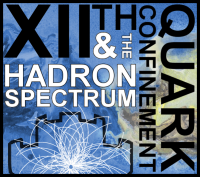Speaker
Description
The chiral magnetic effect (CME) is the generation of electrical current induced by chirality imbalance in the presence of magnetic field. It is a macroscopic manifestation of the quantum chiral anomaly in systems possessing charged chiral fermions. In quark-gluon plasma containing nearly massless quarks, the chirality imbalance is sourced by the topological transitions. In condensed matter systems, the chiral quasiparticles emerge in the so-called Dirac and Weyl semimetals having a linear dispersion relation. Recently, CME was discovered first in a 3D Dirac semimetal ZrTe$_5$ [Li, Kharzeev, et al arXiv:1412.6543, Nature Physics (2016) doi:10.1038/nphys3648)]. It is now observed in more than half a dozen Dirac and Weyl semimetals. 3D Dirac/Wyl semimetals have opened a fascinating possibility to study the quantum dynamics of relativistic field theory in condensed matter experiments, with potential for important practical applications.
